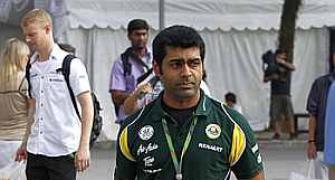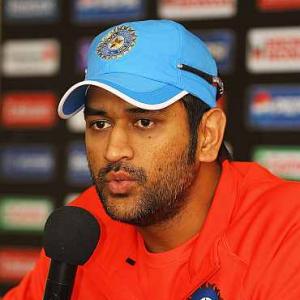Ever since humans started waging wars for territories, the foot soldier, the infantryman has remained and continues to remain in the forefront to bear the brunt of the enemy's onslaught. Some military theorists imagined that the infantry had perhaps outlived its use, especially when war fighting (as per the epochal thesis of Alvin Toffler) had transited from the Second Wave (the industrial revolution) to the epoch making Third Wave of Electronic Revolution after the Gulf War of 1990, which heralded the onset of the famed Revolution in Military Affairs (RMA).
It was thought that the foot infantry might well become an anachronism with the consent of the Third Wave warfare, with the large scale employment of precision guided munitions, sub-meter resolution satellites and other sophisticated tools of information. These prophets of doom were in for a rude shock when American soldiers came up against the foot soldier in Somalia soon after the Gulf War triumph against Iraq.
The Somali warlords negated the high tech wizardry and inflicted such heavy causalities on the Americans that their stay became untenable. The continued need for well-trained infantry was made plain to military strategists. The Kargil aggression (1999) has set to rest any speculation about the present and the future role of infantry, especially when low intensity conflict (in the nuclear backdrop) is fast becoming the primary form of warfare in the current millennium.
It is proved beyond doubt that the infantry remains the key determinant of victory in war given the above context. Frankly speaking, no silicon chip computer has as yet been invented that can match the strength, the courage, the tenacity and persistence of human beings and their ability to innovate and cope with the unforeseen
No matter how well trained they are, each onward step against the enemy poses danger and even death. And yet the bayonet man, our infantry soldier continues his march with little heed to his own life. He is besieged with a single mission - to vanquish the enemy and to live and die in honour. As far as one can see, the infantryman continues to be in The vanguard of the military operations. Yes, the third Wave and the RMA would perhaps turn him into what Toffler termed a "niche warrior", equipped with Global Positioning Satellite navigation computers that can be worn as body vests, armed with Night vision Devices and laser designators.
The Infantryman of tomorrow thus equipped would be a formidable force. He would always be needed for he has the courage and the resilience to brave the storm and reach where no tanks, no Infantry Combat Vehicles can operate. He is the sentinel of the borders keeping constant vigil. His commitment, unfailing loyalty, humaneness, and unflagging patriotism shines on the lapses of the army, in the pristine glory of our National flag which they help keep flying high.
The Kargil war is an ode to the dogged determination of the Indian infantry soldier to brave the fierce weather conditions in an equally inhospitable terrain where the enemy had the advantage of pelting bullets and grenades from the heights. In May 1999, the massive Pakistani intrusions came to light in Kargil. Over a thousand Pakistani troopers of the North Light Infantry had ensconced themselves in the glacial heights of Kargil.
Merely walking can be extremely taxing at these heights ranging from eight to eighteen thousand feet above sea level. The Pakistani game plan was to sever the national highway 1A that links Srinagar with Leh. It was then that the infantry swung into action, pushing the enemy back and regaining control of our own territory.
India can truly take pride in having the finest warriors in the world from among its vast array of ethnic groups who have proved their mettle time and again during the First and the Second World Wars and in the post-independence period in the defence of our country, as also in several peace-keeping missions abroad. The simple yet highly motivated and tough infantryman is the most prized asset of the Indian army.
The Ahir, the Ladakhi, the Kumaoni, the Garhwali, the Rajput, the Maratha, the Dogra, the Assamese, the Naga and brave men from madras (South India) have displayed unmatched valour in battle after battle. They have inherited great traditions of bravery and their sacrifice remains unparalleled in the annals of history. Generations of soldiering have honed them into a military asset and a valuable human resource for the country. With years of fine tuned training for combat readiness, they show a remarkably high threshold for combat stress.
It was to these fine Indian officers and jawans that the country turned during difficult times of the Kargil intrusion. Simple, modest, unassuming but amazingly tough and resilient, it is the infantryman who made India ride into victory. Quite simply, these infantrymen doggedly fought day and night, dauntless and peerless in courage and steadfastness.
Heroism has been a way of life with the Indian infantryman. Of the total 21 Param Vir Chakras awarded since independence, 17 have been won by the officers and men of the infantry. This is in addition to 58 Ashok Chakras, the highest peacetime gallantry award of the Republic that they have won. Both the field marshals of this army came from the infantry - the charismatic and the inimitable Sam Manekshaw and the very epitome of an officer and a gentleman, the ramrod straight soldier from Coorg, who laid the foundation of the post Independence Indian Army - Field Marshal KM Cariappa.
The Indian infantryman therefore epitomises the essence of soldiering. The infantry truly is what soldiering is all about. The Indian infantry has proved its mettle against erstwhile world class foes like the Germans, the Japanese and the Turks. Postindependence, it has been the cutting edge of the Indian fighting machine in every war since 1947.
It is India's bulwark against insurgency and terrorism and all forms of low intensity conflict. Neither nuclear weapons nor precision guided munitions or other electronic marvels will ever make it irrelevant. It will continue to rule the battlefields. The queen of battle is quite simply dauntless and immortal.








